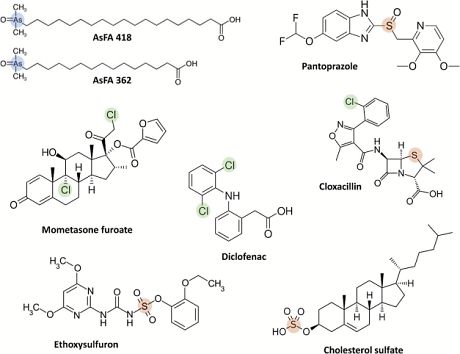Researchers from the University of Graz propose to use 1,2-Hexanediol as eluent for RP-HPLC coupled to ICP-MS. This eluent avoids the necessity to operate the ICP-MS in the organic mode, improving the detection power of the hyphenated system.
Background:High-performance liquid chromatography (HPLC) is the most often applied separation technique for speciation analysis. While ICP-MS is the most sensitive element-selective detection system, its coupling with HPLC is hampered by the limited tolerance for organic solvents. In order to address this limitation, the ICP is operated in the "organic ICP-MS mode", using a well-balanced addition of oxygen to the plasma gas to prevent the formation of carbon particles, reducing the flow rate to the sample introduction system, cooling the spraychamber to limit evaporation of the solvent and using Pt cones to avoid the fast corrosion of Cu/Ni cones under these conditions. Unfortunately, the different components of the organic ICP-MS mode have a negative impact on sensitivity, reducing the detection power typically by two orders of magnitude. The tolerance of the ICP-MS for organic solvents is depending on some physicochemical properties of the solvent influencing the solvent load to the plasma including boiling point, vapour pressure, viscosity, surface tension, and density.
The new study:
Researchers from the University of Graz targeted their work to find alternative organic solvents that can be highly tolerated by the ICP and provide exceptionally strong chromatographic elution at lower eluent concentrations. The ideal solvent would enable the coupling of reversed-phase chromatography with ICP-MS detection under default conditions and standard experimental setup without any of the components of the organic ICP-MS mode with their negative impact on sensitivity and robustness.
In order to compare different solvents, a standard separation system was configured, including a short C18 column operated under a standard set of parameters: mobile phase flow rate: 0.25 mL min−1; column temperature: 50 °C; injection volume: 1.0−3.0 μL; and mobile phase composition: formic acid 0.1% v/v with variable contents of the different organic solvents investigated. A group of hydrophobic compounds with a LogP within the range of 2.4−8.2 (computed using XLogP3 3.032) were selected as model compounds. The selected compounds are of medicinal/environmental interest and detectable via ICP-MS through a heteroatom (see figure 1).

Figure 1:
Chemical structures of the hydrophobic model compounds chosen by the researchers. ICPMS/MS detection was based on the highlighted heteroatoms.
Chromatographic experiments involving mobile phases containing >10−25% of methanol, acetonitrile, or isopropanol could not be performed with ICP-MS detection under the standard conditions used due to plasma instability. 1,2-Hexanediol was selected as a candidate because of its extremely low vapour pressure of 2.7 Pa at 20 °C (0.02 mmHg) and a high boiling point of 224 °C which would be expected to result in low solvent load to the plasma. Even further, its high LogP of 0.7 would enable higher chromatographic elution strength at lower organic content. Using the separation of the model compounds with the different solvents, 1,2,-Haxandiol showed superior elution strength relative to commonly used solvents even when these were employed at much higher concentrations. The ICP operated under (aqueous) standard conditions tolerated mobile phases containing up to 30% v/v of 1,2-hexanediol which provides superior elution strength to that of >90% v/v methanol or acetonitrile. Also, prolonged operation under such conditions produced no carbon build-up on the interface. 1,2-Hexandiol also has a positive influence on sensitivity, by enhancing the signal for all elements tested up to a concentration of 20%. The effect seems to be related to improved nebulization efficiency.
Finally, the authors tested the applicability of 1,2-hexanediol by performing sulphur speciation in garlic and detection of arsenic-containing fatty acids in spiked human urine. They obtained high separation power and improved sensitivity compared to commonly used solvents. The authors concluded, that 1,1-Hexanediol can replace common organic solvents as a mobile phase for HPLC-ICP-MS, eliminating the negative impact of the organic ICP-MS mode, improving the detection power of the hyphenated system and reducing the health risk for the operator and the environment.
 The original study
The original study
 Bassam Lajin
Bassam Lajin,
Joerg Feldmann,
Walter Goessler,
Elution with 1,2-Hexanediol Enables Coupling of ICPMS with Reversed-Pase Liquid Chromatography under Standard Conditions, Anal. Chem., 94 (2022) 8802−8810.
DOI: 10.1021/acs.analchem.2c01769 Instrumentation used:
Instrumentation used:
 Agilent 1100 HPLC
Agilent 1100 HPLC
 Related studies (newest first)
Related studies (newest first) B. Lajin
B. Lajin,
W. Goessler, Introducing dimethyl carbonate as a new eluent in HPLC-ICPMS: stronger elution with less carbon. J. Anal. At. Spectrom., 36/6 (2021) 1272– 1279.
DOI: 10.1039/d0ja00525h 
A. Leclercq, A. Nonell, J.L. Todolí Torró, C. Bresson, L. Vio, T. Vercouter, F. Chartier,
Introduction of organic/hydro-organic matrices in inductively coupled plasma optical emission spectrometry and mass spectrometry: A tutorial review. Part I. Theoretical considerations. Anal. Chim. Acta, 885 (2015) 33-56.
DOI: 10.1016/j.aca.2015.03.049 
A. Leclercq, A. Nonell, J.L. Todolí Torró, C. Bresson, L. Vio, T. Vercouter, F. Chartier,
Introduction of organic/hydro-organic matrices in inductively coupled plasma optical emission spectrometry and mass spectrometry: A tutorial review. Part II. Practical considerations. Anal. Chim. Acta, 885 (2015) 57– 91.
DOI: 10.1016/j.aca.2015.04.039
S. Li, James S. Fritz,
Organic modifiers for the separation of organic acids and bases by liquid chromatography, Chromatogr. A, 964 (2002) 91– 98.
DOI: 10.1016/s0021-9673(02)00584-8
 Related EVISA Resources
Related EVISA Resources
 Related EVISA News (Newest first)
Related EVISA News (Newest first)
last time modified: October 5, 2024